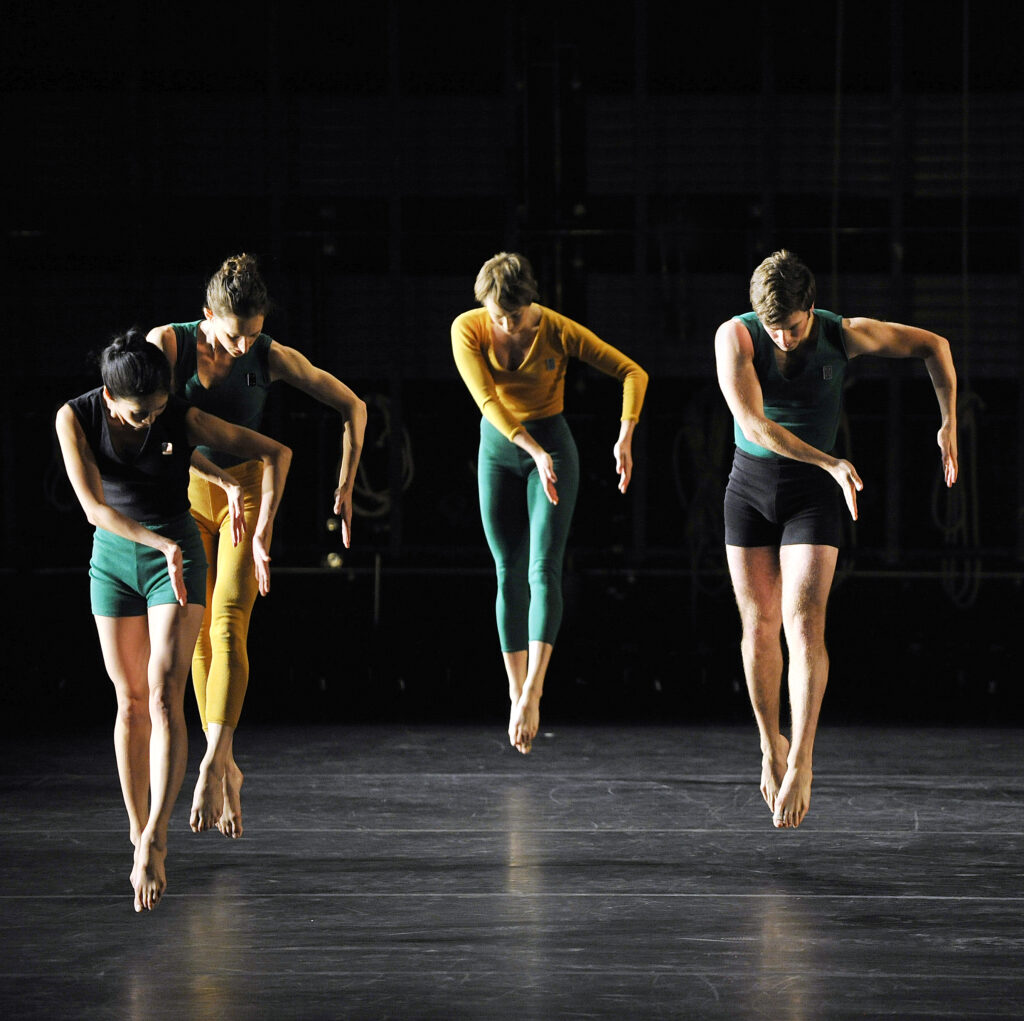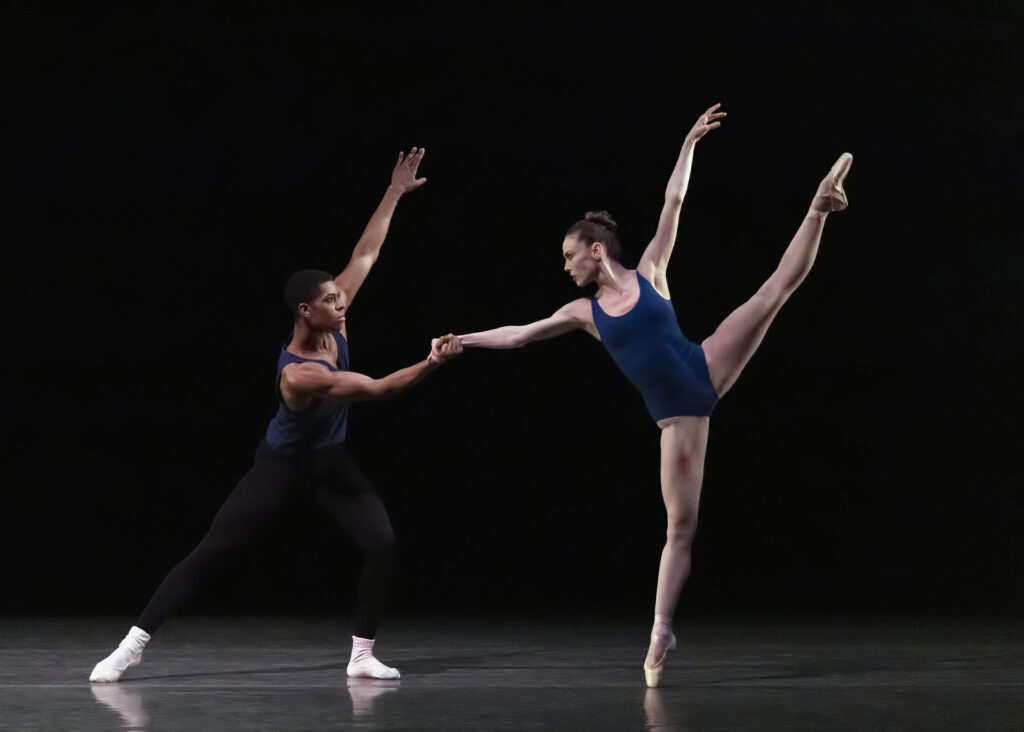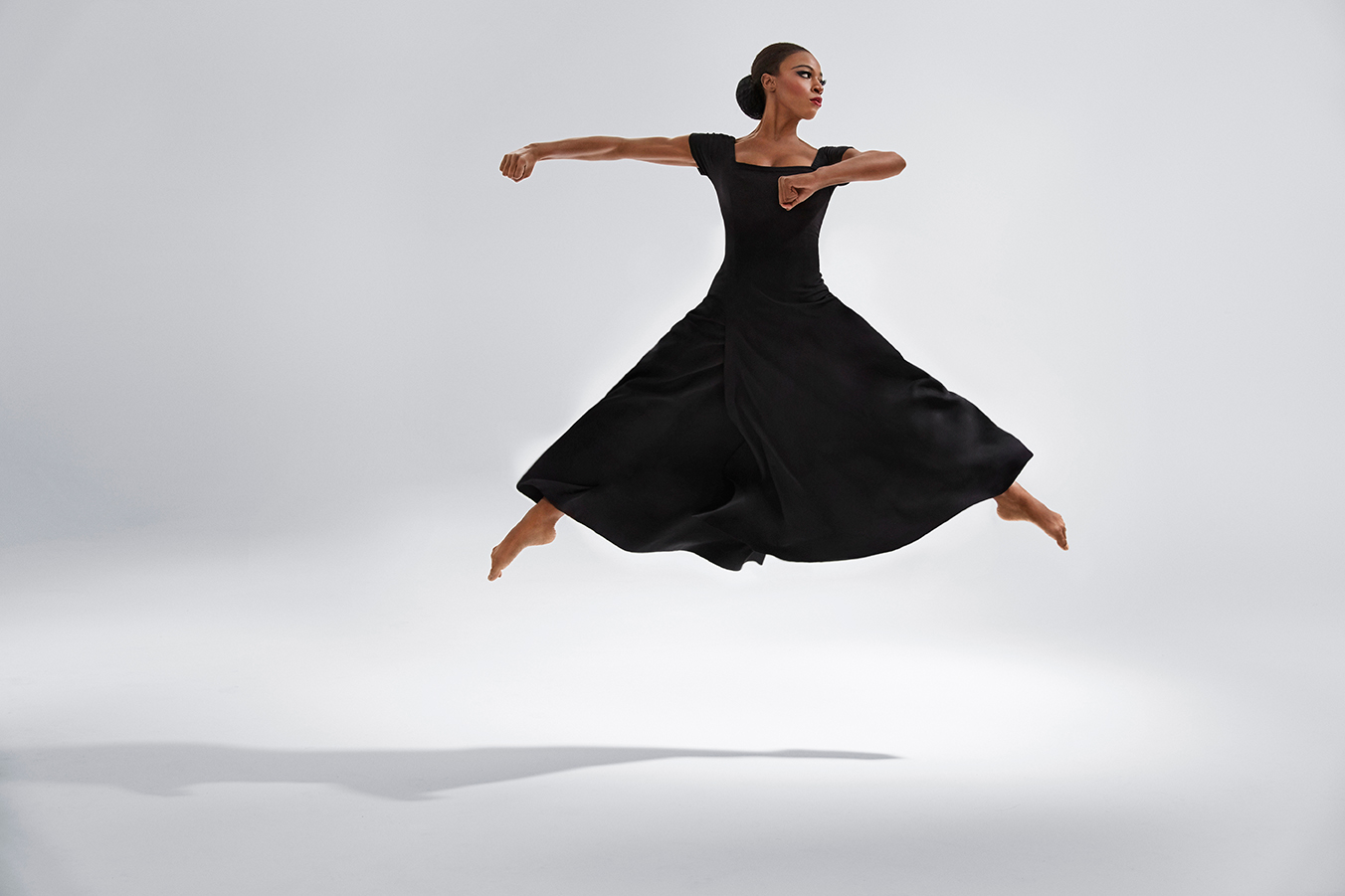The Art of Dancing Without Music
If music usually dictates dance’s rhythm, what happens when the melody falls silent? Dancers rely on music for many things. Practically, a score provides the rhythm and counts, a way to keep track of choreography’s timing as well as entrances and exits. It’s also a key tool for moving together in unison. Artistically, music often serves as a source of emotional and thematic inspiration, providing a window into the overall mood and tone of a work.
While dance is often considered inextricably linked to music, the absence of music can open a unique space for exploration. Three artists share their experiences and advice for dancing in works without music.
Tune In to Your Senses
Most dancers are accustomed to navigating a work through its music, whether planning complex movement patterns onstage or predicting a partner’s location leading up to a big lift. Without music as a guide, dancers instead often rely more on other senses, like sight, but they are still listening. Sam Black, Mark Morris Dance Group’s company director, suggests that the heightened sensations and subtle adjustments made while dancing in silence have a lot in common with what happens when performing with live accompaniment. Because live music varies slightly each time it’s performed, dancers have to adjust accordingly in the moment. “We’re always looking around, we’re always listening very closely to cues,” he says. “That is even more true in a piece where we don’t have musical cues or anything to listen to except each other’s breathing and footsteps.”

Connecting with your senses in a deep way is something that will likely take practice. Black recommends gathering a group of dancers and practicing walking across the floor together, shoulder to shoulder, focusing on tuning in to your own senses, as well as the energy of the group. “The only goal is to stay in line, just walking shoulder to shoulder across the studio,” he explains. “There’s no prescribed amount of time that it’s supposed to take, and you’re not walking in rhythm.”
Establishing a deep awareness of the sounds and placement of the other dancers can also help with distractions, which you may be more apt to notice in the absence of music. “If somebody is coughing in the audience, or if somebody sneezes or there’s rustling, you just have to remain in that super-focused space,” says Emilie Gerrity, a principal dancer with New York City Ballet. Incorporating a mindfulness practice focused on your senses can help make the process of tuning in easier come performance time.
Emphasize Artistry
Dancers also draw artistic inspiration from the music, such as dynamics and emotions. These still exist in silent works, but they might need a bit more accentuation without the aid of a score, Gerrity says. “Because there’s not that added element of music, you really have to draw your audience in,” she explains.
When rehearsing for Jerome Robbins’ Moves, which is performed in silence, Gerrity says it was helpful for her to remember the dynamics of a certain step or section through sensory-based cueing. She says the rehearsal director offered mental imagery as artistic inspiration, describing which moves felt “hot” in temperature, or which step felt like a “shock.”
Dancers can incorporate this strategy by asking their directors or teachers for insight into the intention or feeling of the work, or by taking time to explore it on their own. Black recommends practicing a simple phrase to different kinds of music, paying attention to the tones and feelings each song brings forth. Acknowledging and challenging these natural inclinations can be helpful when it comes to performing without music. “I do think it’s natural that music is an indication, often, of emotion or mood. But the opposite of that is: Just because something doesn’t have music doesn’t mean it’s devoid of feeling or emotion,” Black says.

Dance as One
While it’s always important to stay attuned to other dancers, dancing in a group without music makes this even more vital. “You have to stay on the same wavelength, the same breath pattern, the same energetic movement,” says Leslie Andrea Williams, a member of the Martha Graham Dance Company. “That requires not doing too much to stand out or be beyond the pack. It’s about feeling that collective energy.”
To practice moving as one, Williams recommends an exercise inspired by Graham’s Steps in the Street, which is partially silent. In a group of dancers, establish a rhythmic pattern each dancer can repeat to themselves mentally. (The Graham dancers use a syllabic pronunciation of “silent walks.”) Then, walk backwards with your eyes closed, using this particular beat—and the sounds you hear from other dancers—to guide your movements. “You try to create the sound—and then the silence in between—without looking at anyone,” she explains.
Black also recommends the group of dancers learns a simple movement phrase without counts. Then, covering or facing away from the mirrors, perform the phrase together, trying to stay in unison. Face different directions for an extra challenge. He says this exercise will help develop “the ability to key into what other people are doing. You have to be able to make real-time adjustments, but you’re so keyed into each other and so attentive that it actually ends up being easier because you don’t really have to do as much—it’s almost like catching the current and just riding on it.”





